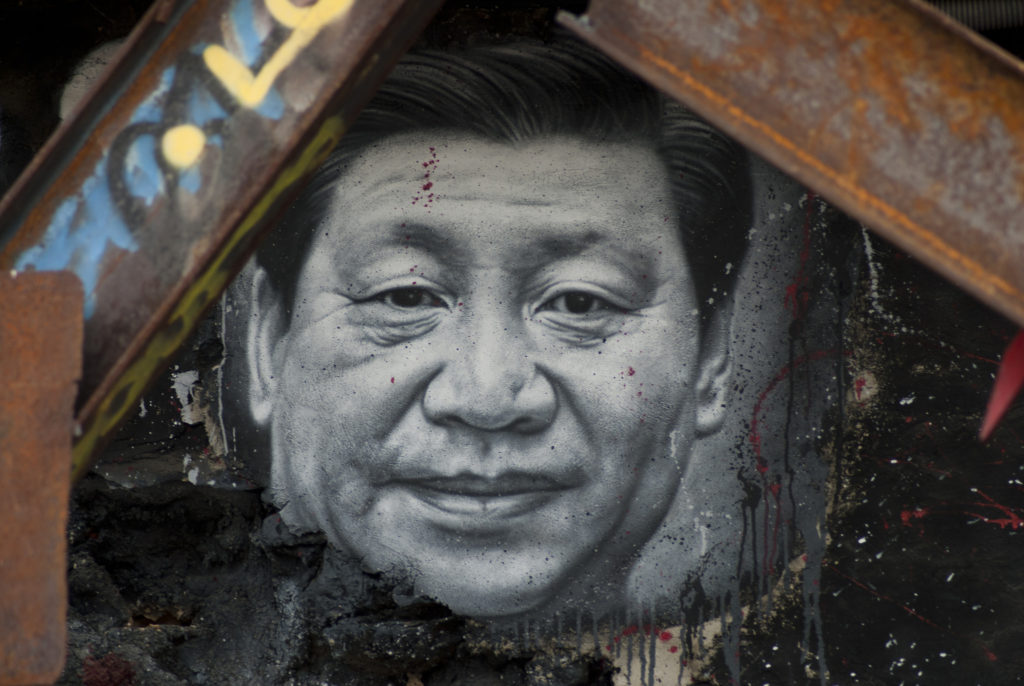Over the past few years, China has been expanding military operations into the South China Sea, and in May, the Wall Street Journal reported that Chinese air force landed an H-6K bomber in the Paracels in its latest militarization of disputed islands in the area. China’s expansion would, “help improve actual combat capabilities in responding to various security threats at sea,” solidifying Beijing’s strategic claim to one of the world’s busiest shipping lanes.
Recently discovered leaked internal documents from Beijing show that the Chinese are intending on further expansion into the South China Sea to, “‘manage a crisis, contain a conflict, win a war’ and overtake the United States in military strength.” The leak comes from February documents published by the Central Military Commission to proliferate President Xi Jinping’s, “thought on strengthening the armed forces,” according to U.K.-based Express.
The move comes as negotiations are taking place between President Donald Trump and North Korean leader Kim Jong-Un. As expansion continues throughout the disputed island, tensions between Japan and China will begin to heighten, but show that Xi’s government is looking to challenge the U.S. at some point in the future.
The documents state, “As we open up and expand our national interests beyond borders, we desperately need a comprehensive protection of our own security around the globe.” Xi’s strategic interests show that his communist country is embarking on a new plan to grow its military, “from being big to being strong,” also indicating that Japan, Russia, and the U.S. are prime examples of superpower militaries they intend to mirror.
The report explains that China’s military is emphasizing the avoidance of a “Thucydides Trap,” when a rising global military power threatens to displace another, causing a path towards war. For China, a strong and modern military will provide a way to, “escape the obsession that war is unavoidable between an emerging power and a ruling hegemony.”
In April 2017, President Xi got a particularly strong taste of military might as he joined President Trump at his Mar-a-lago resort in Florida for the leaders’ first summit together when the American President leaned over to tell the Chinese leader that missiles had been launched to strike Syrian air bases. Foreign Policy explains, “What the attack on Syria signaled about Trump’s readiness to attack North Korea was left to Xi’s imagination.”
Beijing notates a direct military confrontation with the U.S. as, “a slower vehicle on a curve,” claiming America is in decline, but still sees the nation as a threat that must be surpassed.
To show off its military might, the People’s Liberation Army (PLA) launched two advanced naval vessels designed for surface warfare, long-range air defense, and anti-submarine operations, into the South China Sea as the country’s naval modernization program continues.
During the Cold War, the PLA expressed interest in starting an aircraft carrier program for its blue water operations, but it wasn’t until late 2016 when an ex-Soviet aircraft carrier bought by PLA in 2012, named the Liaoning, was combat ready. China has confirmed since then that it is constructing a second, and possibly a third, bespoke carrier that will use an upward, ski jump-designed runway to launch aircraft, similar to British aircraft carriers.
As China continues building air bases, radar systems, and defense capabilities in the South China Sea, the U.S. believes there will be both short-term and long-term consequences. This was compounded when U.S. Secretary of Defense Jim Mattis visited President Xi in China and had the leader tell him that Beijing would not yield “one inch” of the South China Sea.
With China challenging America’s world predominance, misunderstandings about each other’s actions and intentions could lead the two most dominant superpowers into more than just a trade war, especially as China has woeful predispositions of the state of the American military and economy. For example, with America decisively leading the world following World War II, Russia saw a chance to step towards challenging the lead after failing to understand what was needed to succeed.
Currently, the situation which would give either the U.S. or China that upper hand would be the negotiations with North Korea, which President Trump took the lead on. President John F. Kennedy called things like this “precarious rules of the status quo,” which included arms-control treaties and dictating the guidelines of geopolitical relationships. Though, China and the U.S. could theoretically ban together to solve other challenges the world faces with cyberattacks, global terrorism, and regional peace-keeping operations. Nevertheless, such a relationship at this stage in the game could be ruinously idealistic.
Another challenge to be faced is on the economic front, just like what was seen during the Cold War. Had the Soviet economy adopted more Western-style capitalistic practices during the 1970s and 1980s, the economy within the borders could have strengthened the USSR, putting it in a place to assume some kind of world hegemony. However, its military spending of nearly 25 percent of GDP during the Reagan Administration caused it to collapse from within, leading to the Cold War ending with a whimper rather than a bang.
Now, the question for the U.S.-China rivalry is whether Xi’s communist authoritarian government and economy proves superior to American capitalism and democracy, which the answer is probably, nay, decisively “no.” It will only get harder for China to maintain its extraordinary economic growth, which provides legitimacy to its single-party rule.
Long-term strategic thinking is key to surmising the potential struggle between the beast from the East and the best from the West. Although strategic coherence among U.S. allies does not automatically guarantee geopolitical success, its absence will undoubtedly mean failure. Lessons from history will allow the U.S. to remain on top and in good graces throughout the world if the leadership takes a page out of Sun Tzu’s Art of War wherein, “The supreme art of war is to subdue the enemy without fighting.”
